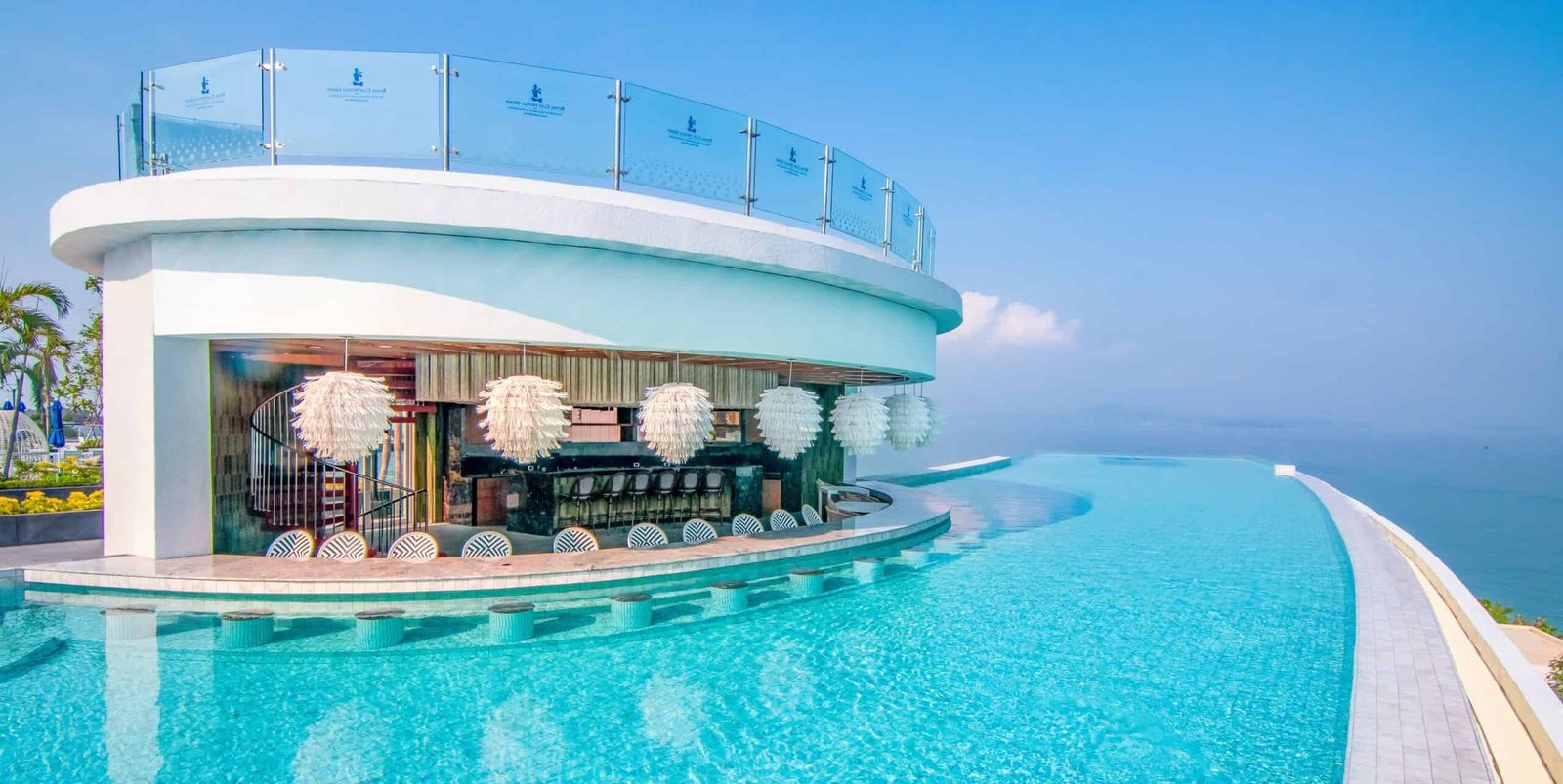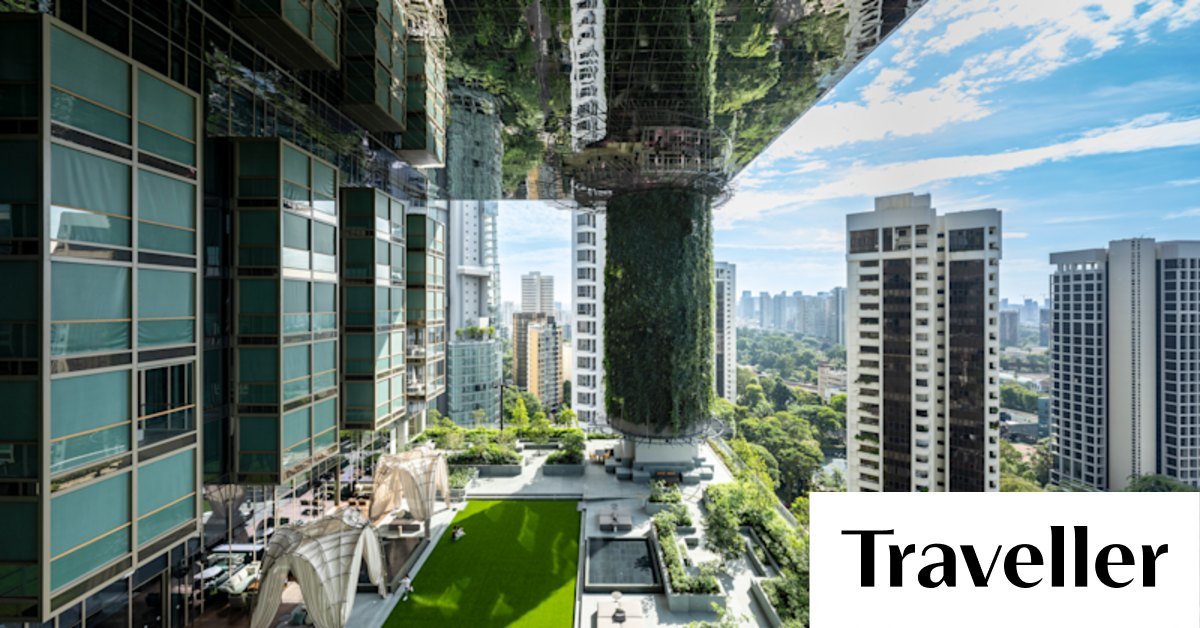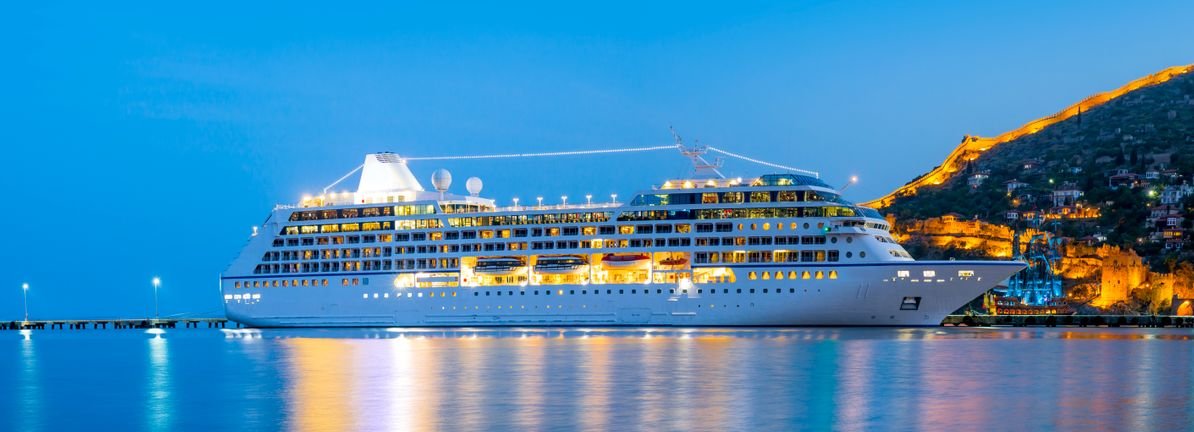Hotels & Accommodations
Royal Cliff Hotels Group wins Tripadvisor Awards

PATTAYA, 5 August 2025: Royal Cliff Hotels Group announced this week that three of its hotels — Royal Cliff Beach Hotel, Royal Cliff Grand Hotel and Royal Wing Suites and Spa — have been recognised in Tripadvisor’s Travellers’ Choice Awards for 2025.
Notably, Royal Wing Suites & Spa has achieved the distinction of being ranked at the top of the ranking among resorts in Pattaya, Thailand. Tripadvisor’s Travellers’ Choice Award winners are among the top 10% of listings around the world on Tripadvisor. Royal Cliff Hotels Group have consistently won these prestigious awards over the years.
As the world’s largest travel guidance platform, Tripadvisor has unparalleled authority with travellers and diners. This award is based on genuine feedback from anyone in the community who has visited and left an authentic, first-hand review on Tripadvisor over 12 months, making it a valuable and trustworthy designation of travellers’ favourites.
“We are truly honoured to receive the Tripadvisor Travellers’ Choice Awards for 2025 across three of our properties. This recognition is a testament to the dedication and passion of our entire team, who work tirelessly to deliver exceptional service and magical experiences to our guests. We are especially proud that the Royal Wing Suites and Spa has achieved the top ranking among the resorts in Pattaya. We would like to thank all our guests for their continued trust and glowing feedback, which inspires us to keep raising the bar in luxury hospitality.”, said Royal Cliff Hotels Group CEO Vitanart Vathanakul.
“Congratulations to Royal Cliff Beach Hotel, Royal Cliff Grand Hotel and Royal Wing Suites and Spa on their recognition in Tripadvisor’s Travellers’ Choice Awards for 2025,” said Tripadvisor President, Kristen Dalton.
“Ranking among the top percentage of businesses globally means you have made such a memorable impact on your visitors that many of them took time to go online and leave a glowing review about their experience. We hope this recognition continues to drive business to you in 2025 and beyond.”
Check out all the reviews and discover more about Royal Cliff Hotels Group:
Perched atop a 64-acre private estate with breathtaking views of the Gulf of Thailand, the Royal Cliff Hotels Group boasts four luxury hotels. Travellers from all corners of the world can unlock a world of magical experiences with Royal Cliff’s curated promotions and packages at the ultimate luxury destination. Guests have access to a plethora of facilities, including seven swimming pools with one being the longest infinity edge pool in Thailand, a luxury sports club with tennis and squash courts, an award-winning health spa, multi-cuisine restaurants and a kids’ club.
For more information on the Royal Cliff Hotels Group, visit www.royalcliff.com.
Hotels & Accommodations
Why green hotels are adding more plants

The Jewel at Changi airport is a shopping mall that houses 2000 trees and palms and 10,000 shrubs, a hedge maze and a rain vortex cascading seven storeys, the world’s tallest indoor waterfall.
Pan Pacific Orchard is divided into Forest, Garden, Cloud and Beach.Credit: Darren Soh
At the Pan Pacific Orchard on Orchard Road, the impressive 23-storey tower has four separate climate zones – forest, beach, garden and cloud – with dense greenery settings, enormous plant-covered pillars and cascading water features.
And at the new Mandai Rainforest retreat by Banyan Tree, just 30 minutes from Singapore’s central business district, vines trail from platforms and balconies and greenery springs up in every passage and corner of the contemporary building. The plan is for the resort to entirely disappear into the rainforest as the plants grow.
While it’s common to be surrounded by plants at resorts in natural environments like tropical jungles or alpine forests, it’s city hotels that are really getting the green-up.
Some of the hotels in the 1 Hotel brand feature about 4000 plants. Clearly, a few hanging pot plants or rubber trees in pots won’t do any more.
Loading
This is part of a broader healthy building movement, which takes a holistic design approach, viewing the construction of a building and its inhabitants as deeply intertwined; human nature as well as plant nature.
It seems to me that this should be the most fundamental consideration of building design, but I think we’ve all seen buildings that have the opposite effect, ignoring the mental health aspects of existing in spaces unsympathetic to our innate biological connection with nature.
Brutalism appears to be in fashion again, but no matter how visually stunning those spaces are, they’re difficult to live in.
As the global population continues to urbanise, architects and designers are trying to figure out how people can reap the benefits of being in nature without going outside.
Loading
We’re lucky in Australia that even our biggest cities provide access to water, trees and natural light. But other urban environments are often land-locked concrete jungles.
The Japanese have always been respectful of the natural world, and even Tokyo, with its population of 37 million, can feel tranquil because of the access to Zen gardens and gorgeous interior tree plantings.
When we travel, we spend a lot of time in artificial environments – planes and airports, notably. Research shows that guests spend more time in biophilic hotel lobbies and rooms. It’s understandable that we would want to stay in a space that’s green and uplifting.
It’s a green revolution.
Hotels & Accommodations
A long, strange trip from counterculture to $6,000 tickets and fancy hotels

The San Francisco fog, a familiar friend to many Grateful Dead shows, rolled in with an unspoken acknowledgment of this special occasion. Inside the park, a blanket of people gathered across the Polo fields for the band’s 60th anniversary.
My mother, a veteran Deadhead, stood beside me, her eyes welling with tears in awe of nostalgia and revamped joy. Around us, my brothers and their buddies from college, a new generation of Deadheads, mingled along with my mom’s old friends.
But this was not the nonchalant vibe of the 1960s and 1970s nor the parking lots circus of the 1980s and 1990s.
In the early days of the band, and pretty much up to the death of Jerry Garcia and the end of the old Grateful Dead, concert tickets were intentionally kept affordable to legions of fans. (Jerry Day in the city is still free.)
This time, some tickets went for as much as $6,000. Instead of camping on friends’ couches, visitors stayed in fancy hotels like the Fairmont. Some longtime Deadheads refused to go, and one told the Standard that “Jerry is rolling over in his grave.”
The story of the Grateful Dead and San Francisco serves as a meaningful metaphor for the city and its ever-changing transformations.
The Dead, which once came from an ethos that symbolized the rejection and dismissal of greed and establishment culture, is now part of the foundation for the city’s economic strategy. The change from a movement defined by counterculture to a weekend of music that encourages spending and civic pride shows how a historically radical culture has sunk into San Francisco and has been celebrated by the very system it once sought to escape from—and a system that tried to repress it, sometimes violently, in the now-famous Summer of Love.
The Grateful Dead and this city have been linked from the very beginning. The band began here in the defiant days of the 1960s. Back then, fans of the Dead found tickets much easier to get. The access was easier, in general.
Sponsored link
Help us save local journalism!
Every tax-deductible donation helps us grow to cover the issues that mean the most to our community. Become a 48 Hills Hero and support the only daily progressive news source in the Bay Area.
A late 1980s Deadhead told me there was a time when everyone simply ran into the field, at max spending $20-$30 for a concert into the 1990s.
As San Francisco celebrated the 60th anniversary, Dead & Company in Golden Gate Park gave a special opportunity to reflect on the band’s evolution, a story from counterculture to a cultural phenomenon—a direct mirror to the city’s own political and social change.
The Summer of Love took place in Golden Gate Park, and faced a lot of pushback from city officials. Though standing for peace, love, and the simple pleasures of good music, the rise of psychedelic drugs and a new form of rock was overwhelming for the city to manage. The “hippies” were not welcome in a lot of places, and far from celebrated by most city officials.
Today, Mayor Daniel Lurie’s administration has officially embraced the Dead & Company concerts, celebrating them as a “significant cultural milestone” and a key driver of the city’s economic recovery.
The political conversation is dominated by economic concerns right now, especially in the revitalization of San Francisco in a post-pandemic world. The city is actively promoting these concerts to attract people from all over and to boost local businesses, with posters, buses, and street signs advertising the three days of music.
Rather than talking about peace and love, the city trumpets estimates that the concerts will have a $150 million economic impact—a world apart from the anti-capitalist sentiments of the Grateful Dead, and the 1960s counterculture.
Muni was not only providing extra services, but also running Grateful-Dead-inspired buses. Hop on the bus, and it might drop you off at the legendary “Shakedown Street” in Golden Gate Park in the JFK promenade between Transverse Drive and Blue Heron Lake Drive. It was a Deadhead marketplace vendors from all over the country come to offer handmade art, shirts, crystals, roses, and enduring spirits of the Grateful Dead.
The three days of music held much more than the Dead & Company themselves. Doors opened at 2:30 PM with lines throughout the park, anticipation buzzing, and everyone coming in with the collective embrace of good music.
Billy Strings, Stergil Simpson, and Trey Anastasio opened for Dead & Company. Young and old came together to celebrate the music. Tie-dye, bubbles, and glitter were full-out signifying a diverse yet unified crowd: the timeless tunes of the Grateful Dead were the bridge of multi-generational gaps.
Dead & Company came with their imperious blend of widely loved melodies and creatively inspired interpretations of the music, delivering three nights of musical journeys. Whether you’re a fan of the Grateful Dead for 60 years, or a fan for just the weekend, the blend of music revealed beloved classics to unexpected gems.
As the final notes faded on Sunday night, a bittersweet feeling sat in the crowd that night. When the music had stopped, the echoes of good vibes continued. Bob Weir and Mickey Hart stood upon their San Francisco roots in awe of the palpable sense of community.
This weekend was something entirely built from the culture old Deadheads once knew, to the uprising of the new generation of music, with touches of different eras throughout the band’s life. The streets were dancing again. At the corner of Haight and Ashbury, hippies gathered and children sang, spanning through to Golden Gate Park. I knew these shows would be more than just a concert, but a testament to the enduring power the Grateful Dead’s music holds, no matter what point in time.
Hotels & Accommodations
Is Asian Hotels (North) Limited’s (NSE:ASIANHOTNR) 71% ROE Better Than Average?

While some investors are already well versed in financial metrics (hat tip), this article is for those who would like to learn about Return On Equity (ROE) and why it is important. By way of learning-by-doing, we’ll look at ROE to gain a better understanding of Asian Hotels (North) Limited (NSE:ASIANHOTNR).
Return on equity or ROE is a key measure used to assess how efficiently a company’s management is utilizing the company’s capital. In other words, it is a profitability ratio which measures the rate of return on the capital provided by the company’s shareholders.
How Is ROE Calculated?
Return on equity can be calculated by using the formula:
Return on Equity = Net Profit (from continuing operations) ÷ Shareholders’ Equity
So, based on the above formula, the ROE for Asian Hotels (North) is:
71% = ₹1.9b ÷ ₹2.6b (Based on the trailing twelve months to March 2025).
The ‘return’ is the amount earned after tax over the last twelve months. One way to conceptualize this is that for each ₹1 of shareholders’ capital it has, the company made ₹0.71 in profit.
See our latest analysis for Asian Hotels (North)
Does Asian Hotels (North) Have A Good Return On Equity?
One simple way to determine if a company has a good return on equity is to compare it to the average for its industry. However, this method is only useful as a rough check, because companies do differ quite a bit within the same industry classification. Pleasingly, Asian Hotels (North) has a superior ROE than the average (7.3%) in the Hospitality industry.
That is a good sign. With that said, a high ROE doesn’t always indicate high profitability. Especially when a firm uses high levels of debt to finance its debt which may boost its ROE but the high leverage puts the company at risk. You can see the 3 risks we have identified for Asian Hotels (North) by visiting our risks dashboard for free on our platform here.
How Does Debt Impact Return On Equity?
Virtually all companies need money to invest in the business, to grow profits. That cash can come from retained earnings, issuing new shares (equity), or debt. In the case of the first and second options, the ROE will reflect this use of cash, for growth. In the latter case, the debt used for growth will improve returns, but won’t affect the total equity. Thus the use of debt can improve ROE, albeit along with extra risk in the case of stormy weather, metaphorically speaking.
Combining Asian Hotels (North)’s Debt And Its 71% Return On Equity
Asian Hotels (North) does use a high amount of debt to increase returns. It has a debt to equity ratio of 2.10. Its ROE is pretty impressive but, it would have probably been lower without the use of debt. Debt does bring extra risk, so it’s only really worthwhile when a company generates some decent returns from it.
Conclusion
Return on equity is useful for comparing the quality of different businesses. In our books, the highest quality companies have high return on equity, despite low debt. All else being equal, a higher ROE is better.
Having said that, while ROE is a useful indicator of business quality, you’ll have to look at a whole range of factors to determine the right price to buy a stock. The rate at which profits are likely to grow, relative to the expectations of profit growth reflected in the current price, must be considered, too. You can see how the company has grow in the past by looking at this FREE detailed graph of past earnings, revenue and cash flow.
Of course, you might find a fantastic investment by looking elsewhere. So take a peek at this free list of interesting companies.
New: Manage All Your Stock Portfolios in One Place
We’ve created the ultimate portfolio companion for stock investors, and it’s free.
• Connect an unlimited number of Portfolios and see your total in one currency
• Be alerted to new Warning Signs or Risks via email or mobile
• Track the Fair Value of your stocks
Have feedback on this article? Concerned about the content? Get in touch with us directly. Alternatively, email editorial-team (at) simplywallst.com.
This article by Simply Wall St is general in nature. We provide commentary based on historical data and analyst forecasts only using an unbiased methodology and our articles are not intended to be financial advice. It does not constitute a recommendation to buy or sell any stock, and does not take account of your objectives, or your financial situation. We aim to bring you long-term focused analysis driven by fundamental data. Note that our analysis may not factor in the latest price-sensitive company announcements or qualitative material. Simply Wall St has no position in any stocks mentioned.
-

 Brand Stories2 weeks ago
Brand Stories2 weeks agoBloom Hotels: A Modern Vision of Hospitality Redefining Travel
-

 Brand Stories1 week ago
Brand Stories1 week agoCheQin.ai sets a new standard for hotel booking with its AI capabilities: empowering travellers to bargain, choose the best, and book with clarity.
-

 Destinations & Things To Do2 weeks ago
Destinations & Things To Do2 weeks agoUntouched Destinations: Stunning Hidden Gems You Must Visit
-

 Destinations & Things To Do1 week ago
Destinations & Things To Do1 week agoThis Hidden Beach in India Glows at Night-But Only in One Secret Season
-

 AI in Travel2 weeks ago
AI in Travel2 weeks agoAI Travel Revolution: Must-Have Guide to the Best Experience
-

 Brand Stories1 month ago
Brand Stories1 month agoVoice AI Startup ElevenLabs Plans to Add Hubs Around the World
-

 Brand Stories3 weeks ago
Brand Stories3 weeks agoHow Elon Musk’s rogue Grok chatbot became a cautionary AI tale
-

 Asia Travel Pulse1 month ago
Asia Travel Pulse1 month agoLooking For Adventure In Asia? Here Are 7 Epic Destinations You Need To Experience At Least Once – Zee News
-

 AI in Travel1 month ago
AI in Travel1 month ago‘Will AI take my job?’ A trip to a Beijing fortune-telling bar to see what lies ahead | China
-

 Brand Stories2 weeks ago
Brand Stories2 weeks agoContactless Hospitality: Why Remote Management Technology Is Key to Seamless Guest Experiences

You must be logged in to post a comment Login